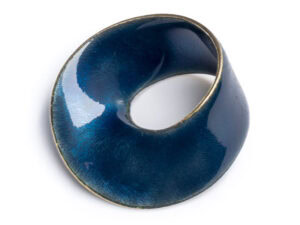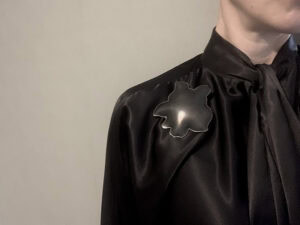These podcasts are provided to you through the joint efforts of SNAG and AJF. There are eight lectures in all, recorded during the 2014 SNAG Conference in Minneapolis, Minnesota, USA. At this time, you can listen to Tanya Herrod give the keynote address, followed by Sofia Björkman of Platina Galerie, art historian Jenni Sorkin, and artist Lauren Fensterstock. More lectures will be added as they are ready.
Tanya Harrod’s keynote speech for the 2014 SNAG conference, From Grains to Gold, takes us on a journey exploring a world of digitization, algorithms, and the technological growth of craft.
What defines value in the realm of craft? Skill, material, mastery of technique—these traditional notions used to define the worth of the handmade. Now those parameters are being expanded. With the pervasive, or at least undeniable, presence of “new medias” proliferating in the arena of the handmade, how do we categorize these objects in a field built upon an evaluation system stemming from notions of “traditional skills”? Things have begun to change and shift, accommodating new methods of making that are redefining old value systems in the field of craft.
What does academia have to say? Where are we to go? It is a compelling talk about the technological advancements and new processes that are now at the forefront of our field.
Tanya Harrod is trained as an art historian. Author of the prize-winning The Crafts in Britain in the Twentieth Century (Yale University Press, 1999), she has organized many exhibitions and contributes regularly to The Burlington Magazine, The Spectator, Crafts, and the Times Literary Supplement. She is on the advisory panel of the Journal of Design History, The Burlington Magazine, and Interpreting Ceramics, and is advisor to the Craft Lives Project, based at the National Sound Archive of the British Library. With Glenn Adamson and Edward S. Cooke, she is the editor of The Journal of Modern Craft. —Aaron Patrick Decker
Sofia Björkman is a founder and owner of Platina gallery in Stockholm, Sweden, as well as a jewelry artist , curator, and board member for Art Jewelry Forum. Sofia’s work is held in many museum collections, and her gallery and curatorial endeavors are equally as impressive.
During SNAG’s 2014 conference, From Grains to Gold, held in Minneapolis this past spring, Sofia presented her thoughts, making processes, and a winding road of meaning, feeling, and interpretation. The presentation, titled The Fox and the Porpoise, is an on-going project of objects and jewelry; in it, Sofia discusses her working process as well as her curatorial aims. Looking for meaning in life, she searches for language and the ability to use her work as a way to gain understanding, one story leading to another. This talk is about making to find an explanation, and a journey into the artistic practice of one of the most brilliant minds in our field. —Aaron Patrick Decker
Jenni Sorkin is a professor of contemporary art history at the University of California, Santa Barbara. She specializes in material culture, craft, and design; gender and artistic labor; art criticism; and feminist historiographies and theory, to name just a few. Sorkin gave a talk titled We Can Work It Out: Feminist Labor and the Future of Craft at the SNAG 2014 conference, From Grains to Gold, in Minneapolis. Her talk centered around the idea of gendered craft practice and the history of women’s labor in various craft media. Sorkin’s talk struck a chord with the crowd, garnering applause. She points out the continuing issues of sexism within the institution, as well as gendered patterns of mentorship in contemporary jewelry practice. One of the strongest voices in contemporary craft, Jenni allows us a new perspective on a field we are all entrenched in, revealing topics that are of most relevance to makers now. —Aaron Patrick Decker
Lauren Fensterstock is an artist, writer, and curator based in Portland, Maine. Her dark and poignant work, held in public and private collections both nationally and abroad, has garnered a great deal of interest in the past decade.
Taking viewers into a dark, meticulously made and cared-for garden of paper and charcoal, she shares with us her research, processes, and ultimately her conceptual trajectory. A skeptic of “relying on inanimate objects to give us intimate human experience,” Fensterstock attempted in her early work to make a critique of keepsakes and heirlooms, and found that she approached her work by creating a social construction merely to pick apart. Afterward, Fensterstock found that she no longer wanted to critique the ideas she was interested in, but desired alternatives, making what she wanted to see in the world. This podcast allows us a peek into the workings of one of the strongest artists in our field at this moment. —Aaron Patrick Decker




